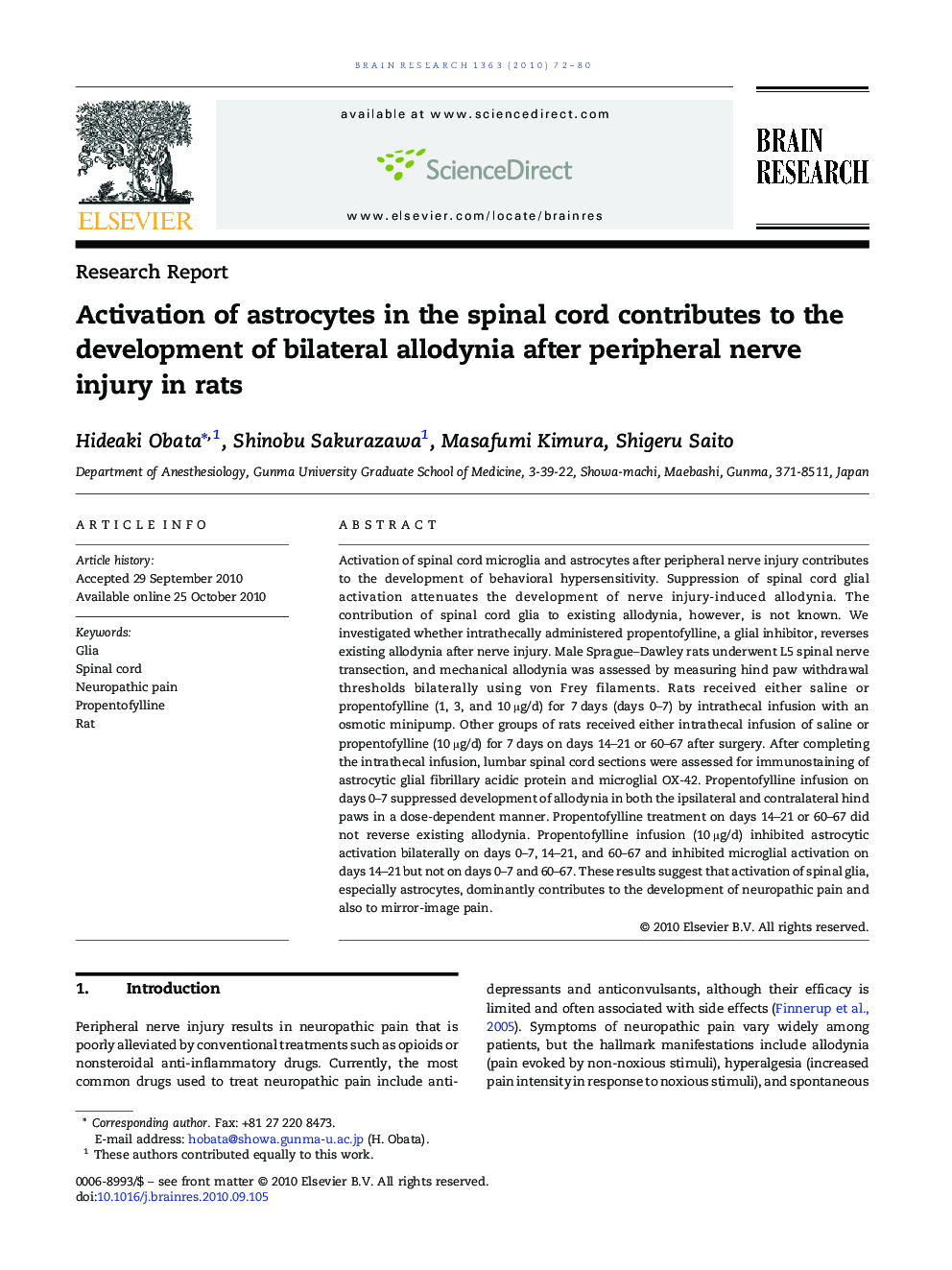| کد مقاله | کد نشریه | سال انتشار | مقاله انگلیسی | نسخه تمام متن |
|---|---|---|---|---|
| 4326324 | 1614076 | 2010 | 9 صفحه PDF | دانلود رایگان |

Activation of spinal cord microglia and astrocytes after peripheral nerve injury contributes to the development of behavioral hypersensitivity. Suppression of spinal cord glial activation attenuates the development of nerve injury-induced allodynia. The contribution of spinal cord glia to existing allodynia, however, is not known. We investigated whether intrathecally administered propentofylline, a glial inhibitor, reverses existing allodynia after nerve injury. Male Sprague–Dawley rats underwent L5 spinal nerve transection, and mechanical allodynia was assessed by measuring hind paw withdrawal thresholds bilaterally using von Frey filaments. Rats received either saline or propentofylline (1, 3, and 10 μg/d) for 7 days (days 0–7) by intrathecal infusion with an osmotic minipump. Other groups of rats received either intrathecal infusion of saline or propentofylline (10 μg/d) for 7 days on days 14–21 or 60–67 after surgery. After completing the intrathecal infusion, lumbar spinal cord sections were assessed for immunostaining of astrocytic glial fibrillary acidic protein and microglial OX-42. Propentofylline infusion on days 0–7 suppressed development of allodynia in both the ipsilateral and contralateral hind paws in a dose-dependent manner. Propentofylline treatment on days 14–21 or 60–67 did not reverse existing allodynia. Propentofylline infusion (10 μg/d) inhibited astrocytic activation bilaterally on days 0–7, 14–21, and 60–67 and inhibited microglial activation on days 14–21 but not on days 0–7 and 60–67. These results suggest that activation of spinal glia, especially astrocytes, dominantly contributes to the development of neuropathic pain and also to mirror-image pain.
Research Highlights
► Activation of spinal microglia and astrocytes after nerve injury contributes to neuropathic pain.
► Both allodynia and glial activation were observed ipsilateral and contralateral to nerve injury.
► Intrathecal glial inhibitor propentofylline prevented development of allodynia bilaterally.
► Intrathecal propentofylline inhibited activation of astrocytes in the dorsal horn bilaterally.
► Astrocytes activation contributes to the development of neuropathic pain and to mirror-image pain.
Journal: Brain Research - Volume 1363, 6 December 2010, Pages 72–80